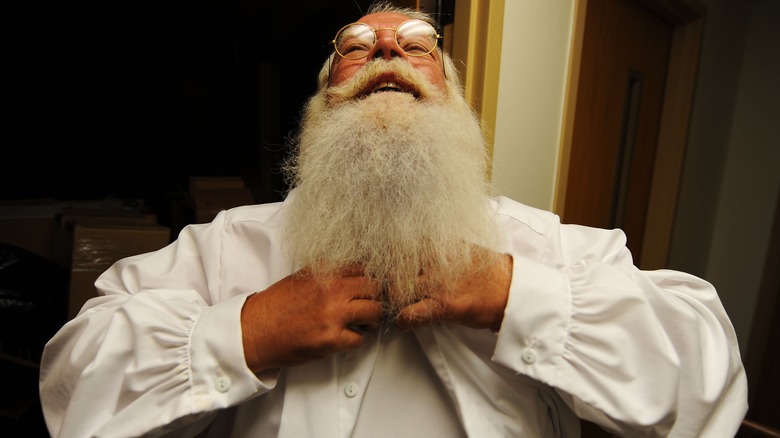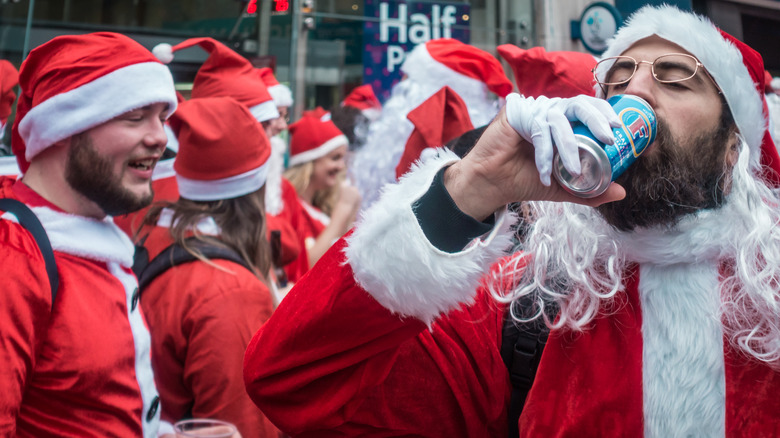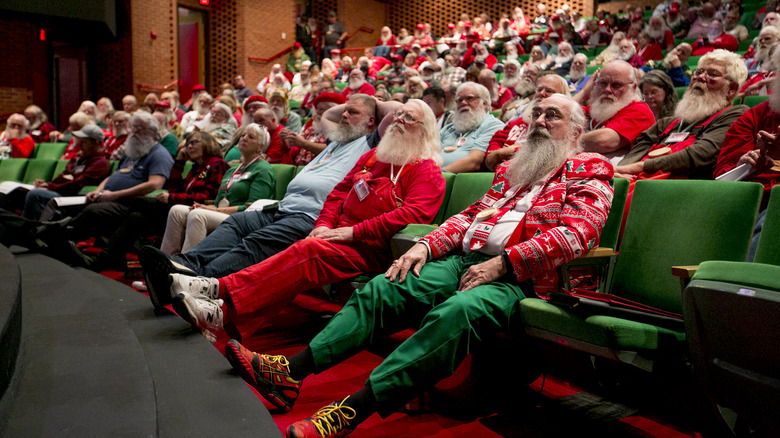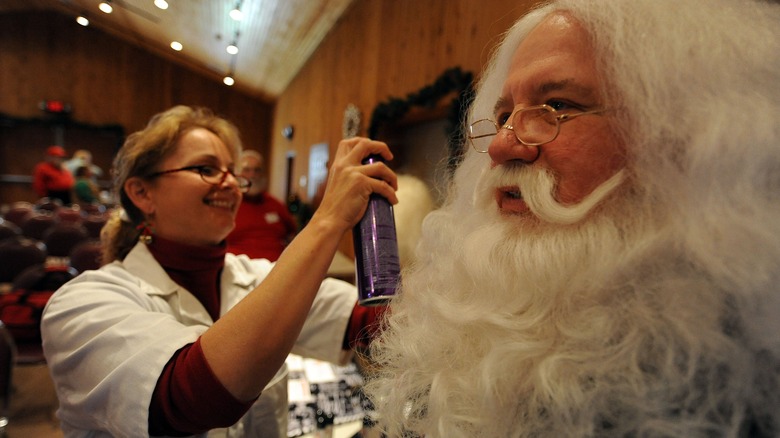What It's Really Like To Go To Santa School
Playing Santa isn't a role, it's a craft. And that's why thousands of wannabe Santas have plopped down thousands of dollars to learn the art, science, and the duties that go along with keeping children (and their parents) dazzled at Christmastime. There are dozens of seminars, workshops, and classes across the country promising to teach the ins and outs of Santa-ing (that's a word, right?). Yet, one tops the list, and you don't even have to go to the North Pole to learn its lessons: The Charles W. Howard Santa School in Midland, Michigan. It's been around nearly a hundred years and some consider it to be "the Harvard of Santa institutions," per CBS News.
Each year, the school attracts aspiring St. Nicks from around the U.S. who want to learn everything it means to truly become the jolly man in the red suit. Department stores will sometimes send somebody they hired for the holiday season to get Santa training. Many are freelance Santas looking to pick up seasonal income. Every now and then, there's a police officer who is trying to build better community relations. And then there are those who come from small towns who just want the kids in their community to have Santa visit them. "Being Santa is a way of life," Tom Valent, the dean of the school, told USA Today. "It's a state of mind. Not an act ... We are trying to produce ambassadors of love and happiness."
Dismal Santas inspired the school
In 1934, Charles W. Howard — a former Macy's Santa — established a Santa school after seeing other men playing the role wearing cheap beards and dressed in tattered, stained suits. "There was a need for better Santas," Valent told National Geographic in 2016. "Some of the Santa characters were apparently pretty rough, smoking and drinking." They also seemed clueless about reindeer, and they also seemed to know none of the most important Christmas songs. "It's a cardinal sin to forget the words to 'Jingle Bells,'" Holly Valent, Tom's wife, told USA Today. "And the names of your reindeers — Dasher, Dancer, Prancer, Vixen, Comet, Cupid, Donner, and Blitzen."
Witnessing such lackluster Santas go up and down the street was blasphemy to Howard. He first portrayed Santa Claus in a school play when he was in the fourth grade, according to the biography on Howard's website. The spirit of Sinterklaas simply lived in Howard, and he went on to serve as Santa in the Macy's Thanksgiving Day Parade for nearly 20 years from 1948 to 1965. And he worked as a "Santa consultant" for the 1947 Christmas classic, "Miracle on 34th Street." Howard reportedly couldn't wait for a school to be built to start teaching the well-meaning (but wholly inadequate) Santas, so he began teaching them in his living room before later moving to retrofitted barns, per Mental Floss.
A rigorous curriculum
Each year, hundreds of people apply for Santa tutelage at the Howard Santa School, but not everybody gets accepted. The Valents sniff out those who have no interest in singing or seem to have little patience for children of all ages. But by the time they finish their admissions screenings, about 200 Santas (and Mrs. Clauses) gain entry to the school. According to CBS News, before those lucky enough to get in start their Santa training in Midland, Valent kicks off the session with a prayer: "Thank you, Lord, for the safe journeys to Midland, Michigan, to study the art of Santa Claus. Let us strive to be the best Santas we can possibly be."
From that point, it's 45 hours of Santa education packed into three days. There are field trips and train rides, and book learning about every aspect of the legend of St. Nick. After all, kids of all ages come in with their tricky questions. And much of it has to do with costuming, as well as the mannerisms and etiquette of being Santa Claus, including dancing and singing. For the most part, the curriculum is the same as when Howard himself taught the courses (he handed it over to the Valents before his death in 1966), but changing times have meant the addition of sessions on physical conditioning, being in front of a camera, and marketing in the digital age.
Transforming into Santa isn't cheap
According to The Washington Post, some of the student Santas decide to enroll because they hear rumors of six-figure salaries among the red suit class — or at least a starting hourly rate of $25. It's understandable to want to recoup some of the money they spent on the school (the tuition is about $500 plus travel and lodging costs). A good Santa suit can run as much as $3,000, per CNN. The boots could be another $700. And that doesn't even include costly beards and wigs to complete the Kris Kringle look. With thousands of dollars on the line, the school could get competitively testy. One attendee told The Washington Post that when he goes back home, local Santas can get unfriendly to each other "because you're taking their business away, or they're taking business away from you." But the camaraderie at the Santa school was a totally different experience: "I'm telling you, there wasn't a bad Santa in the bunch."
Perhaps the founder, Charles W. Howard, was right all those years ago when he said, "He errs who thinks Santa enters through the chimney. Santa enters through the heart" (via the school's website).



